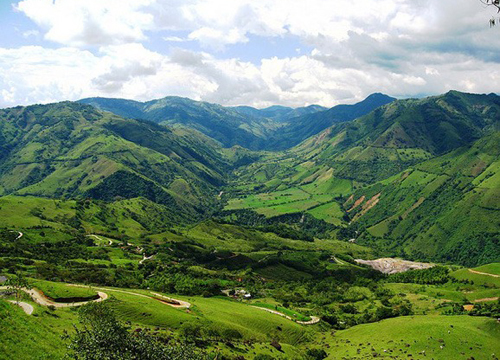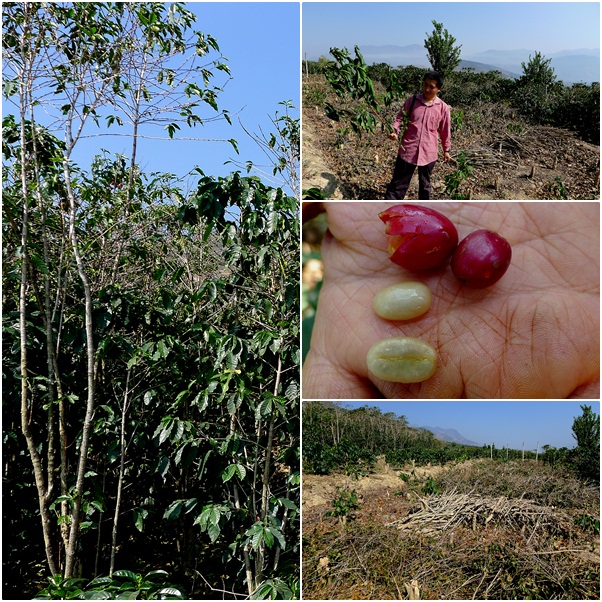Brazilian Coffee Industry Brazilian Coffee production areas learn about Brazilian Coffee Industry
Coffee industry in Brazil
Coffee is a traditional industry in Brazil. Since 1960, coffee cultivation in Brazil has been ranked first in the world, with an average annual output of 24.6 million bags (60 kg each). In 2002, due to favorable weather and a good year for coffee production, Brazilian coffee reached the best level in history, reaching 47.2 million bags, an increase of 59.6 per cent over 28.137 million bags in 2001. According to the report of the United States Department of Agriculture in November 2002, due to the increase in productivity and the increase in the number of plants per unit area, the actual production of Brazilian coffee is much higher than the above figure, which should be 51.6 million bags. In 2002, Brazilian coffee exports reached a 270-year high, with a total export volume of 27.99 million bags (60 kg each), an increase of 19.3 per cent over 23.46 million bags in 2001. Due to the decline in international coffee prices, coffee trade volume was 1.355 billion US dollars, down 5.4 percent from 1.432 billion US dollars last year. Brazil is the world's largest exporter of coffee, with an average annual trade volume of US $1.38 billion in coffee beans and instant coffee in the past 40 years. In 2002, the total volume of world coffee trade was 88.7 million bags, and Brazil exported 27.99 million bags, an increase of 19.3% over 2001, accounting for 30% of the world coffee trade volume, ranking first (the second is Vietnam, with 12.2 million bags, accounting for 13.7%), an increase of nearly 8 percentage points over the 22.3% in 1998. Europe is the largest buyer of Brazilian coffee, accounting for 50 per cent of Brazilian exports. In 2002, coffee exports to EC countries reached US $708.7 million, accounting for 52.3 per cent, with most of the rest sold to the United States and Asia. Coffee beans account for 85% of Brazil's coffee exports. Coffee plays an important role in Brazil's economic structure. Since coffee was planted in the 18th century, coffee cultivation has expanded rapidly and has become an important planting industry in Brazil. Coffee has been one of the main economic incomes of Brazilian countries for nearly 30 years since the middle of the 19th century. In the first 50 years of the 20th century, Brazilian coffee was regarded as an important industry of industrialization, agricultural resource transfer and urban industrialization. Since the 1990s, Brazilian coffee has entered the market economy, especially international multinational corporations have entered Brazil, which has professionalized agricultural trade and had a positive impact on improving coffee quality and promoting domestic consumption. In the past 50 years, coffee has been the main export product of Brazil, accounting for 50% of the country's total exports. due to the diversification of export products, especially the massive exports of soybeans, capital products and consumer goods, the price of coffee has fallen, and there is a lack of standardized market. due to the lack of international market agreements, the Brazilian coffee market shrank, and by 2001, coffee exports had dropped to 2.4%. In recent years, after a period of crisis, Brazilian coffee has begun to recover, and its productivity has almost doubled, reaching 20 bags per hectare, while in the early 1990s, its production has been hovering at 10mur12 bags. Due to the use of advanced planting techniques, the number of plants per hectare in the coffee garden has increased from 1000 to 2000. Due to the overproduction of coffee in the world and the low price of coffee in the international market, it has even reached the lowest level in nearly 30 years (from January 2001 to January 2002 alone, the price of small-grain coffee in Brazil plummeted by 63.4% and that of large-grain coffee by 73.9%). The Brazilian government is implementing an emergency plan to resume coffee production activities and formulate promotion strategies, such as increasing the added value of products, improving and replacing varieties. Establish quality parameters of different planting areas and so on to promote coffee trade. In 2002, the total investment in coffee production reached 895.4 million reais, of which 95.3% was financial and financial investment, the government invested 690 million reais for the annual coffee harvest and trade, and the Ministry of Agriculture supported the coffee industry and subsidized 75.6 billion reais for coffee auctions. coffee producers, cooperatives and business groups can buy and sell coffee from the government at agreed prices and agreed times. In 2003, it is proposed to increase foreign sales by 700-8 million bags. Brazilian coffee producing areas are mainly distributed in Minas, Esprito Santo, Sao Paulo, Parana, Rondonia, Bahia and other states. At present, the number of Brazilian coffee plants has reached 6 billion, about 3 million hectares, of which 90% of the coffee trees are less than 10 years old. Minas is the main coffee producing area in Brazil, with an output of 22.71 million bags in 2002, accounting for 48% of the national output. The state of Esprito Santo is the main producing area of Brazilian large-grain coffee, ranking first in the country.

Important Notice :
前街咖啡 FrontStreet Coffee has moved to new addredd:
FrontStreet Coffee Address: 315,Donghua East Road,GuangZhou
Tel:020 38364473
- Prev

Introduction of dry Coffee Coffee beans Sixteen coffee beans from different places
Introduction of sixteen kinds of coffee beans from different places, very complete, coffee expert can come to reference! Rwanda Kivu Rwanda-Coffee beans without Rwanda were introduced to Rwanda by German missionaries in the 20th century. Because of Rwanda's superior climate and unique geographical environment, growing coffee beans has a unique fruity and grassy aroma. The planting base in Rwanda
- Next

Yunnan small grain coffee the history of Yunnan small grain coffee
Yunnan small-grain coffee taste: when Yunnan small-grain coffee is imported, you first taste a hint of sweet and bitter taste, the nose is full of coffee aroma similar to the smell of flowers, and there is a slight sour taste on both sides of the tongue. If you continue to taste it, the sour taste will spread to the cheeks, but it is very light and quiet. If you like to drink strong coffee, there will be a powerful throb of temples and heart, which is exciting. Drink cloud
Related
- Guji coffee producing area of Guji, Ethiopia: Humbela, Shakiso, Wulaga
- What is the most expensive variety of Qiloso in BOP multi-variety group?
- How to store the coffee beans bought home?
- Why are Yemeni coffee beans so rare now?
- Ethiopian Sidamo all Red Fruit Sun Sun Santa Vini Coffee beans
- SOE is mostly sour? What does it mean? Is it a single bean? what's the difference between it and Italian blending?
- Is Italian coffee beans suitable for making hand-brewed coffee?
- How to choose coffee beans when making cold coffee? What kind of coffee beans are suitable for making cold coffee?
- Just entered the pit to make coffee, what kind of coffee beans should be chosen?
- Can only Japan buy real Blue Mountain Coffee? What are authentic Jamaican Blue Mountain coffee beans?

